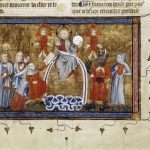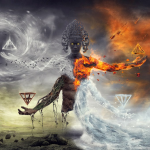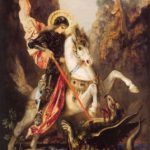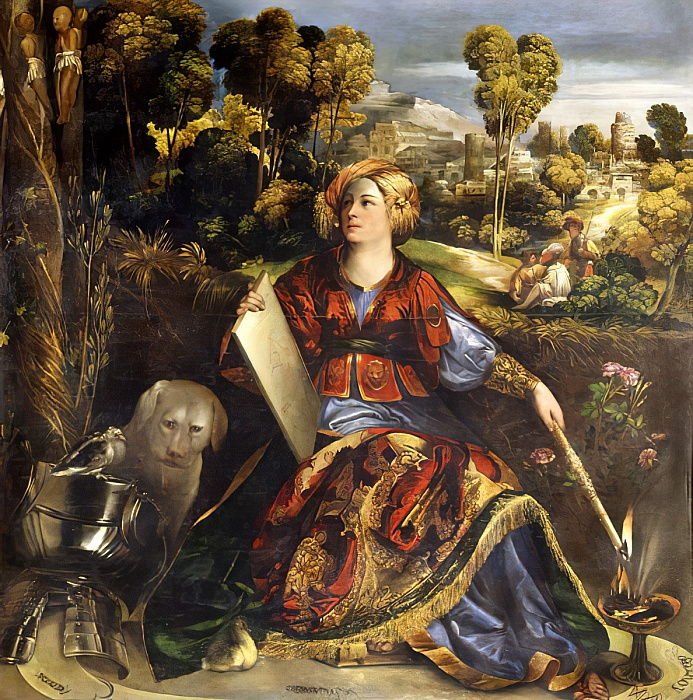
In Greek mythology, Circe was the daughter of Perse, one of the Oceanids, and Helios, the Titan sun god. As such, she was part of a family of formidable sorceresses.
Pasiphae was her only sister, and she was the queen of the Greek island, Crete, and also the wife of King Minos. It was also said that she gave birth to the Minotaur, a creature that was half man, half bull, with the head and horns of a cattle and the body of a man. The notorious enchantress Medea was also her niece, since she was the daughter of Circe’s brother Aeetes, the guardian of the Golden Fleece. Circe had another brother, Perses, who was slain by Medea after he had deposed her father Aeetes from the throne of Colchis.
The Greek hero Odysseus visited her island, Aeaea, with his companions, whom she changed into swine. But Odysseus, protected by the herb moly (a gift from Hermes), compelled her to restore them to their original shape. He stayed with her for one year before resuming his journey. Odysseus has to travel to the Underworld to seek out the deceased Tiresias, who would be able to tell Odysseus all that Circe could not. Circe thus tells Odysseus how he can enter the Underworld and afterwards, Circe also tells Odysseus how he can safely traverse between Scylla and Charybdis.
Circe a wand or staff called the rhabdos which she also used to channel her magic and turn Odysseus’s men into beasts. In fact, this was the earliest mention of a “magical wand or staff” in Western writings.
The story is told by Homer in the Odyssey, Books X and XII. Tradition placed her island near Italy or located her on Mount Circeo.
Before falling for Odysseus, Circe felt an attraction to at least two other men, the first one a mortal, and the second one a god.
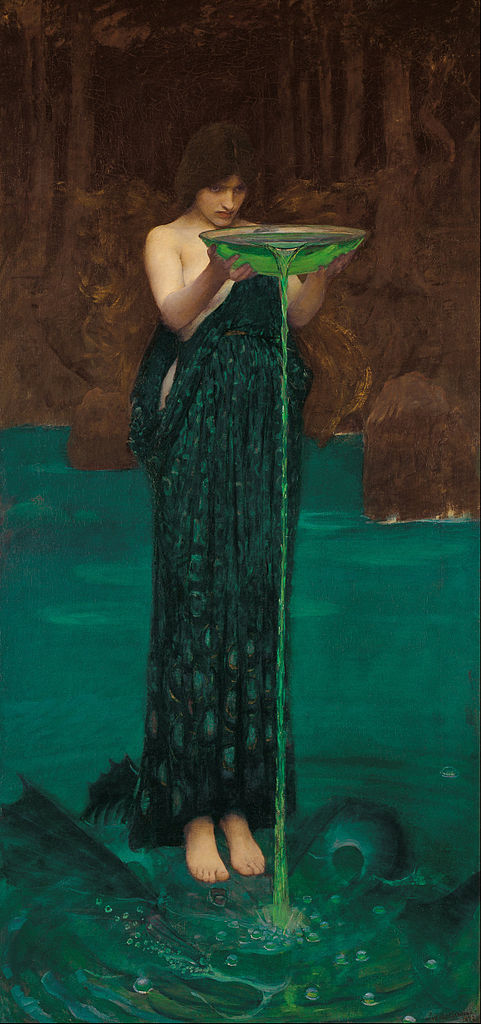
The mortal was Picus, who was too faithful to his wife Canens for his own sake: after fiercely rejecting Circe’s advances, Picus was turned into a woodpecker. Unable to fight through the unbearable sorrow, six days later, Canens threw herself into the river Tiber. When friends of Picus came to Circe to seek news of their friend, they being unaware of his transformation, Circe then transformed them into other animals, giving rise to much of the fauna found upon Mount Circaeum.
It was said that Circe was in love with Glaucus, a minor sea deity, but Glaucus knew not of this love, for he only had eyes for Scylla, a beautiful maiden. Some tell of Circe poisoning the water in which Scylla bathed, and some tell of Circe giving Glaucus a love potion, which the sea god believed would ensure Scylla fell in love with; in either case, Circe’s potion transformed Scylla into a hideous monster who later became famous for wrecking ships in conjunction with Charybdis.
Towards the end of Hesiod’s Theogony (c. 700 BC), it is stated that Circe bore Odysseus three sons: Agrius (otherwise unknown); Latinus; and Telegonus, who ruled over the Tyrsenoi, that is the Etruscans. The Telegony, an epic now lost, relates the later history of the last of these. Circe eventually informed her son who his absent father was and, when he set out to find Odysseus, gave him a poisoned spear. When Telegonus arrived to Ithaca, Odysseus was away in Thesprotia, fighting the Brygi. Telegonus began to ravage the island; Odysseus came to defend his land. With the weapon Circe gave him, Telegonus killed his father unknowingly. Telegonus then brought back his father’s corpse to Aeaea, together with Penelope and Odysseus’ son by her, Telemachus. After burying Odysseus, Circe made the other three immortal.
According to an alternative version depicted in Lycophron’s 3rd-century BC poem Alexandra , Circe used magical herbs to bring Odysseus back to life after he had been killed by Telegonus. Odysseus then gave Telemachus to Circe’s daughter Cassiphone in marriage. Some time later, Telemachus had a quarrel with his mother-in-law and killed her; Cassiphone then killed Telemachus to avenge her mother’s death. On hearing of this, Odysseus died of grief.






